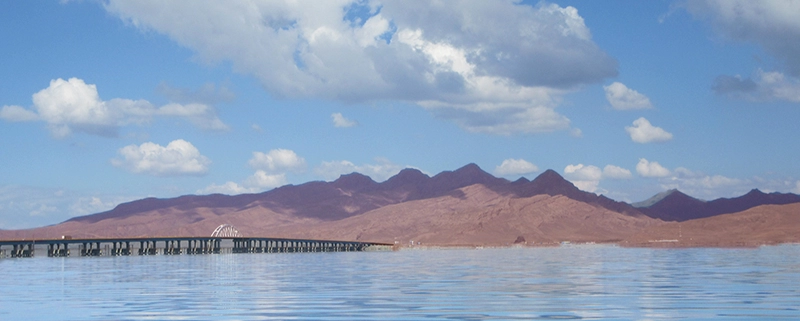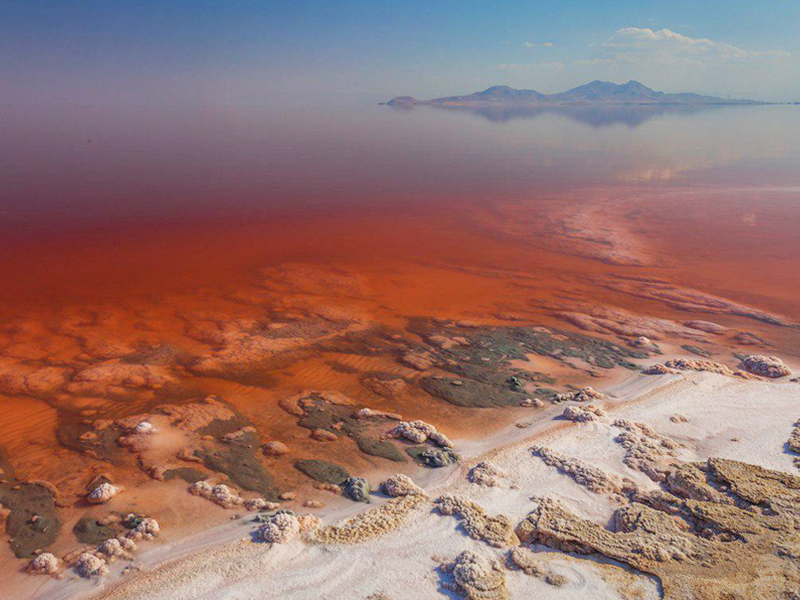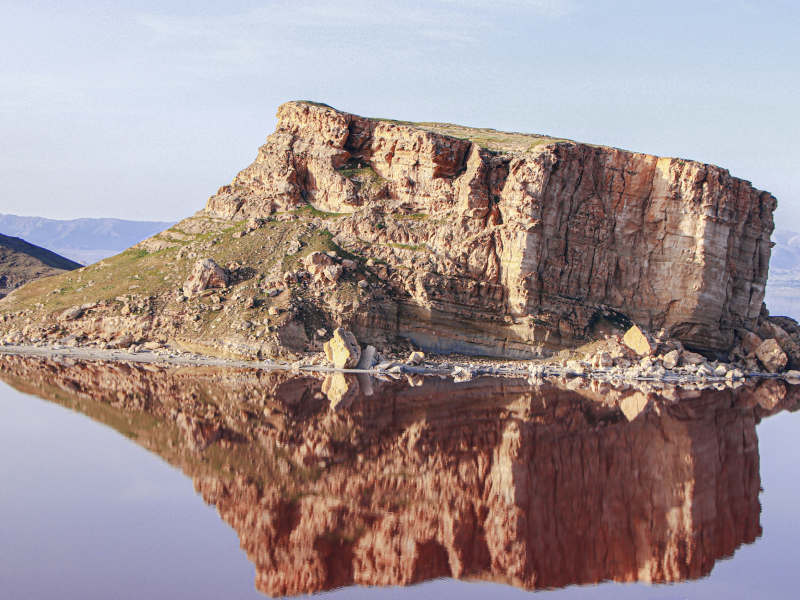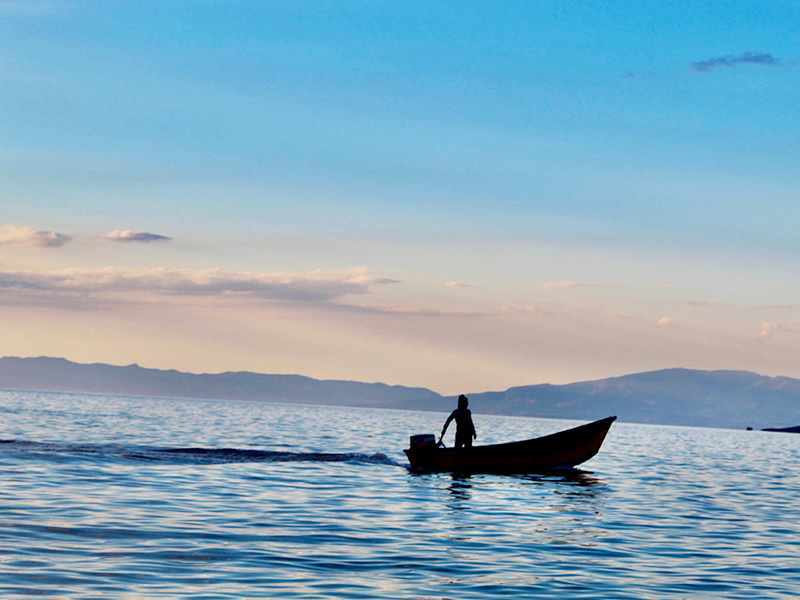Lake Urmia, Iran (Photos, History, and More)
Lake Urmia, located in Northwestern Iran, has long been celebrated as one of the world’s largest hypersaline lakes and a natural wonder. Spanning an area of approximately 5,200 square kilometers, it has been an essential ecological and economic resource for the region. If you’re a nature lover seeking an extraordinary travel experience, Lake Urmia should undoubtedly be at the top of your bucket list. This ancient saltwater lake has captivated travelers and explorers for centuries with its breathtaking vistas, unique ecological features, and therapeutic properties. In this article, we invite you to embark on a virtual journey to explore the allure and charm of Lake Urmia, a remarkable tourist attraction.
The Greatness of Lake Urmia
Lake Urmia is the largest lake in Iran, the largest saltwater lake in the Middle East, and the sixth-largest saltwater lake in the world. This great lake, also known as the “Salt Sea” due to its remarkably high salinity, is one of the world’s most remarkable hypersaline lakes. Covering an extensive area of approximately 5,200 square kilometers, this awe-inspiring lake is a testament to the beauty and diversity of nature.
What Is Lake Urmia Known For?
Lake Urmia, the largest salt lake in Iran, is known for its hypersaline nature, healing properties, and lively pink flamingos during migration seasons. The lake’s breathtaking beauty with its ever-changing colors and serene landscapes, makes it a sought-after destination for nature enthusiasts and photographers. Additionally, Lake Urmia’s traditional salt production, cultural significance, and historical heritage add depth to its allure, attracting visitors keen on exploring the region’s rich past. Despite environmental challenges, Lake Urmia remains a remarkable natural wonder, offering a unique and unforgettable experience for travelers seeking to discover the magic of this hidden gem.
Why Urmia Lake Is Important?
Lake Urmia is important for its rich biodiversity, serving as a critical habitat for various plant and animal species, including migratory birds and unique fish. The lake’s therapeutic properties have attracted visitors seeking natural remedies for health conditions, contributing to the region’s tourism and economy. Additionally, Lake Urmia holds cultural significance, with evidence of human settlement dating back thousands of years, making it of interest to history enthusiasts. Its preservation is essential for maintaining ecological balance, supporting local livelihoods, and ensuring the survival of migratory routes and various bird species, highlighting the significance of this natural wonder as a valuable asset for Iran and the world.
Therapeutic and Healing Properties
The therapeutic properties of Urmia Lake’s saltwater have been known and celebrated for centuries, attracting visitors seeking natural remedies for various health conditions. Some of the purported therapeutic properties of Urmia Lake’s saltwater:
1. Skin Conditions: The mineral-rich saltwater of this lake is believed to be beneficial for skin health. Bathing in the lake’s water is said to help soothe and alleviate skin conditions such as psoriasis, eczema, and acne. The natural salts and minerals in the water are thought to have cleansing and purifying effects on the skin, leaving it refreshed and rejuvenated.
2. Rheumatism and Arthritis: The buoyancy of the saltwater in Lake Urmia provides a gentle and supportive environment for those with joint and muscle issues, including rheumatism and arthritis. Immersing in the water can ease pressure on the joints, providing relief from pain and inflammation. The warmth of the lake’s waters can also help to relax muscles, promoting a sense of comfort.
3. Respiratory Ailments: Inhaling the saline-infused air near Lake Urmia is believed to have positive effects on respiratory health. The salt particles in the air are thought to help widen airways and improve breathing, making it beneficial for individuals with asthma, bronchitis, and other respiratory conditions.
Urmia Lake Wildlife
Lake Urmia is a vital ecosystem that supports a diverse array of wildlife, both aquatic and avian. Despite facing challenges due to the lake’s declining water levels, it remains an essential habitat for numerous species. Some of the fascinating wildlife that can be found in and around Lake Urmia:
1. Flamingos: Lake Urmia is perhaps most famous for its vibrant pink flamingos. These graceful birds gather in large numbers, especially during the migratory season, creating a breathtaking spectacle. The lake provides an ideal feeding ground for them, as its shallow waters are rich in the tiny shrimp and algae that give flamingos their pink color.
2. Migratory Birds: As a crucial stopover on the migration route between Europe and Africa, Lake Urmia attracts a wide variety of migratory birds. Thousands of waterfowl, including ducks, geese, and pelicans, visit the lake during their seasonal journeys, making it a haven for birdwatchers and ornithologists.
3. Gulls and Terns: Various species of gulls and terns can be seen along the lake’s shores, diving into the water to catch fish and other aquatic prey. These seabirds add to the picturesque scenery of the lake.
4. Wetland Birds: The wetlands surrounding the lake are home to an impressive diversity of wetland birds, such as herons, egrets, ibises, and storks. These elegant birds can often be seen wading through the shallow waters, searching for food.
5. Fish: While the high salinity of Lake Urmia makes it challenging for many fish species to survive, some specially adapted species can thrive in these conditions. These include brine shrimp, killifish, and the endemic Urmia tooth carp. The brine shrimp, in particular, plays a crucial role in the lake’s ecosystem, serving as a primary food source for flamingos and other bird species.
6. Reptiles and Amphibians: The wetlands and marshy areas around Lake Urmia provide a habitat for various reptiles and amphibians, including turtles, snakes, and frogs. These creatures contribute to the overall biodiversity of the region.
7. Invertebrates: The lake’s saline waters are home to numerous invertebrates, including crustaceans and snails. These small organisms play a vital role in the lake’s food chain and ecological balance.
Salt Crystals and Salt Production
Lake Urmia’s salt crystals and traditional salt production are fascinating aspects that add to the allure of this unique destination. Along the lake’s shores, stunning salt formations glisten under the sun, creating a surreal and enchanting landscape. These gleaming salt crystals form as the water evaporates, leaving behind a layer of crystallized salt. The interplay of light and salt creates a mesmerizing sight, drawing photographers and nature enthusiasts to capture the beauty of this natural wonder.
Salt production has been a significant economic activity in the region for centuries. Local communities have mastered the art of traditional salt harvesting, carefully collecting the crystallized salt from the lake’s shores. Workers skillfully scrape the salt crystals and pile them into mounds, which are then left to dry in the sun. Once dried, the salt is collected, cleaned, and processed for various uses, including culinary and industrial purposes.
Urmia Lake National Park Khaneshan
Lake Urmia and its 102 islands were declared a protected area of Urmia in 1967. After that, in 1975, the same area plus 60 meters of lake boundary with an area of 540,885 hectares was upgraded to Urmia Lake National Park due to its unique characteristics, special and sensitive climatic conditions, and the need for special protection. The national park is home to numerous species of plants and animals, many of which are endemic to the region. The park is a valuable ecosystem for wildlife and plays a crucial role in maintaining the ecological balance of the area.
What Happened to Lake Urmia?
Lake Urmia has faced a severe environmental crisis marked by a significant decline in its water levels and overall health. Natural factors such as climate change and prolonged drought have contributed to a reduced inflow of water into the lake, causing water scarcity and a drop in water levels. Human activities, including water mismanagement, dam construction, and pollution, have further exacerbated the situation. The lake’s hypersaline nature has made it sensitive to changes in water levels, impacting its delicate ecosystem and biodiversity. As a result, this lake has experienced the loss of critical wetland habitats, reduced agricultural productivity, economic hardships for local communities, and threats to human and animal populations.
Why Did Lake Urmia Shrink?
Lake Urmia has shrunk primarily due to a combination of climate change, drought, water mismanagement, and the hypersaline nature of the lake. Reduced precipitation and increased evaporation rates caused by climate change have led to decreased water inflow. Prolonged drought in the region further exacerbated the water scarcity. Human activities such as dam construction, excessive water extraction, and diversion of rivers have disrupted the natural water flow into the lake.
Final Word
Lake Urmia is a true jewel in the crown of Iran’s natural wonders, beckoning travelers with its unparalleled beauty, therapeutic waters, and abundant wildlife. Whether you’re an adventure seeker, a nature enthusiast, or a cultural explorer, Urmia Lake promises an unforgettable experience that will leave an indelible mark on your heart. So, pack your bags, venture off the beaten path, and immerse yourself in the enchanting world of Lake Urmia – a journey of discovery and wonder awaits you.
Are you planning to travel to Iran and looking for an Iran travel agency? Check out our Iran tours and feel free to contact us.










Leave a Reply
Want to join the discussion?Feel free to contribute!